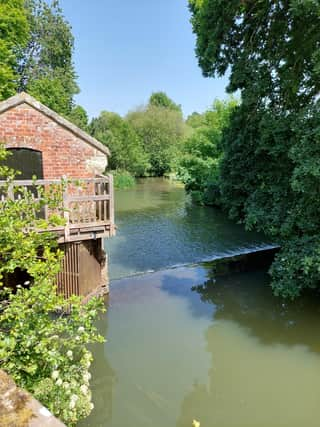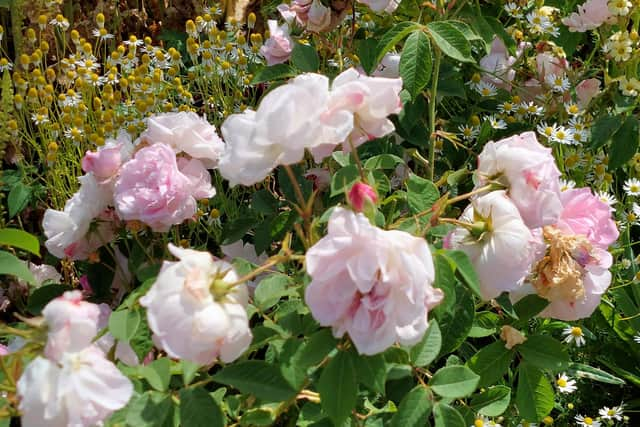A look inside Midhurst’s famous Woolbeding Gardens


The gardens are situated on the former estate of the Lascelles family where the gardens merge into the landscape of the River Rother.
Originally owned by the Lascelles family, Woolbeding Estate was given to the National Trust in 1957, comprising of a total of 1102 acres, of which 26 acres are devoted to the gardens.
Advertisement
Hide AdAdvertisement
Hide AdSince 1972 Woolbeding has been leased to Simon Sainsbury, and subsequently his partner Stewart Grimshaw. It was during this time that the garden evolved into the extensive and vibrant creation that it is today.


The Georgian Grade 1 listed house has enjoyed being a social venue to a wealth of previous residents. The celebrated poet and novelist, Charlotte Smith, lived with her husband and children at Woolbeding for two years between 1785 and 1787. Then between 1791 and 1831, Lord Robert Spencer, son of the 3rd Duke of Marlborough, occupied the estate, entertaining prominent Whig politicians.
Development of the gardens commenced in 1973, when Simon Sainsbury and Stewart Grimshaw appointed American garden designer Lanning Roper.
Roper's distinctive design features are evident throughout, with clear structures, elegance and restraint being the principal elements used within the layout.
Advertisement
Hide AdAdvertisement
Hide AdThis area developed over a period of ten years to become an ideal environment for exploring.
Woolbeding Gardens is under the management of National Trust gardeners and volunteers and their small team of dedicated gardeners are always on hand to help guests appreciate the beauty of a remarkably inspiring garden.
Volunteer Mick Owen said: “The National Trust first got this estate in 1958 and was in lieu of death duties from the Lascelles family, the daughter of the House leased the main house until 1972 when Simon Sainsbury and his partner Stuart Grimshaw took on the lease. Simon died in 2006 and Stuart leases the house only in his right. When the Trust took over in 1958, they not only took over the main house but over a main plot of land called Manor Farm House, not quite as big as the main house but still important.
The trust still own it and rent it independently of this one, they obtained 20 properties in the village which they still own and rent out and they also own about 1100 acres of land.
Advertisement
Hide AdAdvertisement
Hide AdThe House hear today is considered to be 18th century, built between 1710 and 1760 by the Mill family. The Mill family were here for over 100 years, three generations of them and what they did was to take a house interior of the 1600’s, which in of itself is a modification of an Elizabethan manor house from the 1500’s and created this house.
The Mill family sold the estate in 1790 to Lord Robert Spencer and he was the third son of the third duke of Malborough, a typical 1800’s landed gentleman, politics, gambling, womanising. The trust are pretty sure that he bought the estate from gambling winnings so the winnings were big. He drew up plans to more than double the size of the house which did involve moving the Saxon origin church. Fortunately the Bishop in Chichester had a different view about that and the church is in its original spot.
What he did do, he covered the inner courtyard that the Mill family had created, he covered it with a glass dome roof so the middle of the house was then weather proof but it was light and airy and like an atrium in the middle so it was really was impressive.
He was here for about 35 years and is considered the grandest period for the house. Lots of politicians used to come and visit, including Charles Fox, the Whig minister and the house had the nickname of being the Temple of the Whiggery, with all the politicians that would come down.
Advertisement
Hide AdAdvertisement
Hide AdSome trees that the Mill family created which was the Western flower border, which is an avenue of trees 960 feet long, past what is called the ‘Long Walk’, the trees planted by the Mill family did not last that long but have been maintained by the various owners of the estate including the National Trust.
“Another tree at the Estate which is most impressive is the ‘Oriental Tree’, which is one tree with multiple trunks, which grows almost horizontally before it goes vertical, so the tree looks like a great big bowl.”
The Gardens and estate are open Thursdays and Fridays from 10.30am to 4.30pm with the last day of opening being September 30.
Tickets to the gardens cost £10 for a standard adult and £5 for an adult.
Advertisement
Hide AdAdvertisement
Hide AdGuests who are driving in must park at the nearby Grange Leisure Centre as there is no parking on the property.
For more information on the gardens visit www.nationaltrust.org.uk/woolbeding-gardens/features/visiting-woolbeding-gardens-what-you-need-to-know